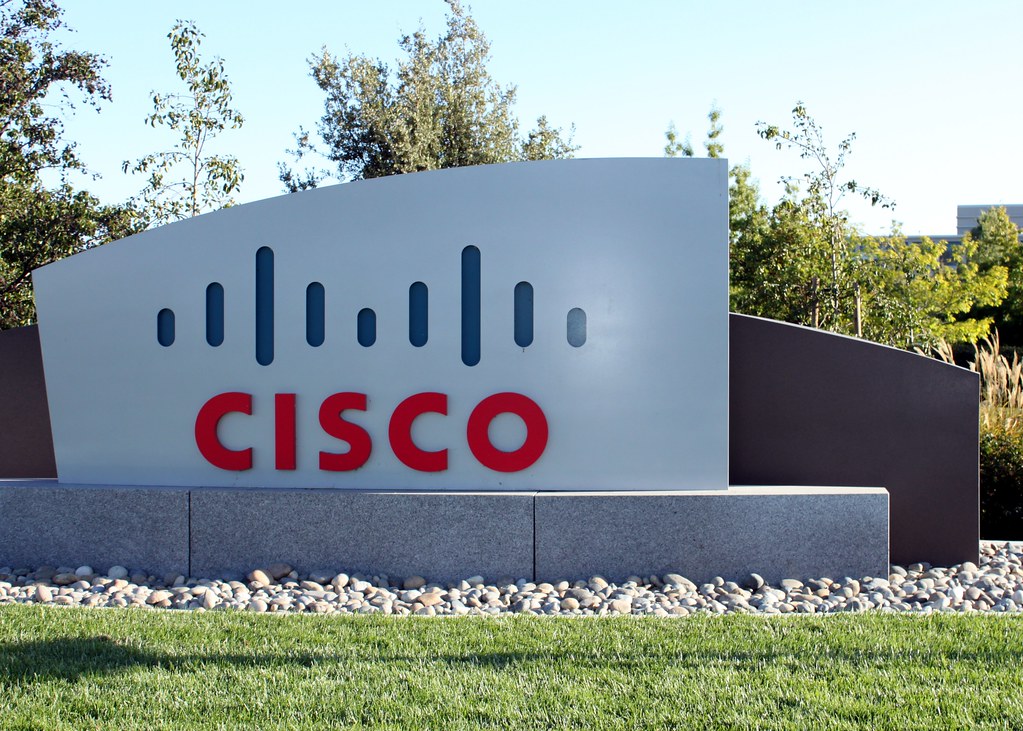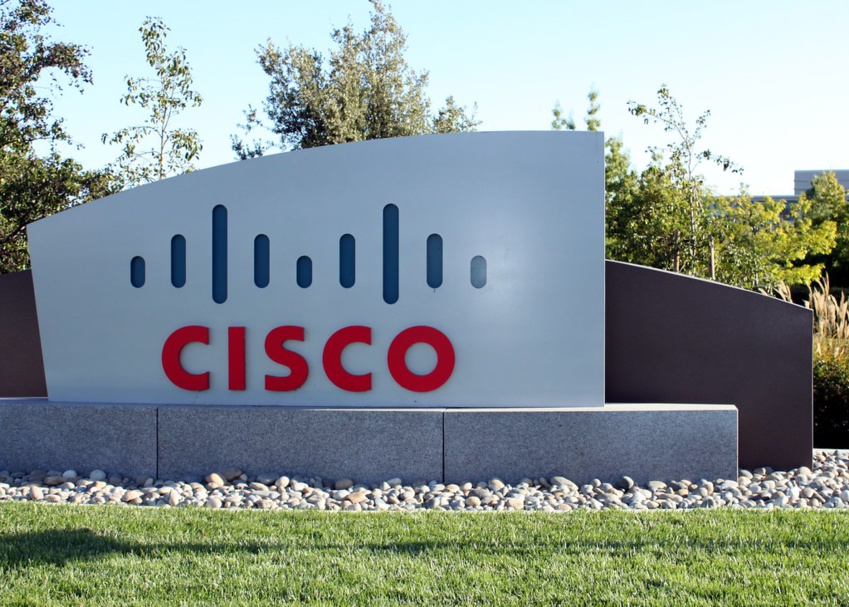The discourse on climate change often centers on the effects of our daily actions, such as opting for electric or green hydrogen vehicles over those that run on fossil fuels, transitioning to less carbon-intensive electricity sources, or using recyclable products or those made from recycled materials. However, this only addresses a portion of the greenhouse gas (GHG) emissions issue, known as operational emissions. The other component, often overlooked but equally important, is embodied emissions, which Cisco has been striving to reduce through thoughtful product design, manufacturing, shipping, and end-of-life management.
Embodied emissions refer to the GHGs produced during the manufacturing, transportation, and end-of-life treatment of a product. These emissions are already present before the product is purchased or used.
Many tech companies are focusing on reducing the operational emissions of current devices by enhancing their energy efficiency. However, the most significant impact can be made in the design, manufacturing, transportation, and recyclability of products. To create a product with a lower carbon footprint throughout its lifecycle, it’s crucial to understand the components of embodied emissions and how product design and transportation methods can be modified to decrease emissions.
A significant step in this direction is quantifying a product’s embodied carbon emissions. This can be achieved through a lifecycle assessment (LCA), which measures the emissions resulting from a product’s manufacture, from the extraction or production of its base materials to the energy consumed in factories to convert materials into components and assemble them into the final product. Emissions can also arise from the production of a product’s packaging, its transportation to the end-user, and its treatment at the end of its useful life.
Measuring operational carbon is arguably simpler, as it relies on tangible metrics such as the amount and source of electricity used, fuel consumption, and their associated emission factors. On the other hand, evaluating a product’s embodied carbon involves several steps:
Embodied emissions refer to the GHGs produced during the manufacturing, transportation, and end-of-life treatment of a product. These emissions are already present before the product is purchased or used.
Many tech companies are focusing on reducing the operational emissions of current devices by enhancing their energy efficiency. However, the most significant impact can be made in the design, manufacturing, transportation, and recyclability of products. To create a product with a lower carbon footprint throughout its lifecycle, it’s crucial to understand the components of embodied emissions and how product design and transportation methods can be modified to decrease emissions.
A significant step in this direction is quantifying a product’s embodied carbon emissions. This can be achieved through a lifecycle assessment (LCA), which measures the emissions resulting from a product’s manufacture, from the extraction or production of its base materials to the energy consumed in factories to convert materials into components and assemble them into the final product. Emissions can also arise from the production of a product’s packaging, its transportation to the end-user, and its treatment at the end of its useful life.
Measuring operational carbon is arguably simpler, as it relies on tangible metrics such as the amount and source of electricity used, fuel consumption, and their associated emission factors. On the other hand, evaluating a product’s embodied carbon involves several steps:
- Determining the system boundaries, i.e., deciding which process steps are included and excluded;
- Adopting a recognized methodology for data collection and emissions quantification, such as the Greenhouse Gas Protocol’s Product Lifecycle Accounting and Reporting Standard, Publicly Available Specification (PAS) 2050, or the ISO14040-44 or ISO14067 standards;
- Gathering data on the quantity of materials used and energy consumed at each lifecycle stage, as well as the carbon dioxide equivalent (CO2e) emission factor for each material and process to calculate total CO2e emissions; and
- Ensuring consistency in the data used for the assessment (e.g., functional unit, timescale).
Once this information is obtained, the embodied carbon emissions of a product can be quantified, and the real work of identifying ways to reduce these emissions can begin.
Having a comprehensive understanding of a product’s embodied carbon emissions allows product designers to make informed decisions that could reduce future emissions. During the design phase, companies can consider incorporating lower-carbon materials into their products. This could involve using the same materials produced in a less carbon-intensive way (e.g., using recycled materials, more energy-efficient industrial processes, or lower-carbon energy at the factory level) or substituting with an alternative material that has a lower carbon footprint.
Manufacturers can also optimize processes and implement design changes to decrease the overall use of materials and waste generated during manufacturing. Embodied emissions can be further reduced by employing more energy-efficient manufacturing processes and technologies, and using low-carbon energy sources. The impact of transportation can be minimized by opting for low-carbon transport modes and fuel types.
Cisco’s team has been diligently conducting lifecycle assessments and product carbon footprint assessments to account for the GHG emissions from its manufacturing, transportation, and end-of-life treatment processes. Information about these processes can be found on Cisco’s ESG Hub.
Manufacturing, transport, and end-of-life emissions account for approximately a quarter of total emissions in Cisco products, highlighting the importance of addressing and reducing emissions not resulting from product use. By calculating the impacts of Cisco products, the teams can not only understand the lifecycle carbon impacts of their products, but also model the impacts of various design, material, and process changes that can be made to their products.
Cisco has set a public objective to incorporate Circular Design Principles into 100% of new Cisco products and packaging by FY25. Cisco has developed 25 Circular Design Principles, which are categorized into five key areas. These principles are crucial in reducing GHG emissions throughout the lifecycles of Cisco products, particularly their embodied carbon emissions. More information about Cisco’s goal and its Circular Design Principles can be found on the ESG Hub.
Cisco also has initiatives in place to promote product returns, reuse, and recycling to minimize emissions from product end of use. When products are returned to Cisco, they are assessed for their condition and suitability for reuse. If a product is in a usable or repairable state and there is a demand for it, it undergoes a testing and/or repair process to meet Cisco’s quality standards. The primary aim of the product return process is to redeploy as much material as possible, thereby reducing the need for new materials and the associated emissions.
Having a comprehensive understanding of a product’s embodied carbon emissions allows product designers to make informed decisions that could reduce future emissions. During the design phase, companies can consider incorporating lower-carbon materials into their products. This could involve using the same materials produced in a less carbon-intensive way (e.g., using recycled materials, more energy-efficient industrial processes, or lower-carbon energy at the factory level) or substituting with an alternative material that has a lower carbon footprint.
Manufacturers can also optimize processes and implement design changes to decrease the overall use of materials and waste generated during manufacturing. Embodied emissions can be further reduced by employing more energy-efficient manufacturing processes and technologies, and using low-carbon energy sources. The impact of transportation can be minimized by opting for low-carbon transport modes and fuel types.
Cisco’s team has been diligently conducting lifecycle assessments and product carbon footprint assessments to account for the GHG emissions from its manufacturing, transportation, and end-of-life treatment processes. Information about these processes can be found on Cisco’s ESG Hub.
Manufacturing, transport, and end-of-life emissions account for approximately a quarter of total emissions in Cisco products, highlighting the importance of addressing and reducing emissions not resulting from product use. By calculating the impacts of Cisco products, the teams can not only understand the lifecycle carbon impacts of their products, but also model the impacts of various design, material, and process changes that can be made to their products.
Cisco has set a public objective to incorporate Circular Design Principles into 100% of new Cisco products and packaging by FY25. Cisco has developed 25 Circular Design Principles, which are categorized into five key areas. These principles are crucial in reducing GHG emissions throughout the lifecycles of Cisco products, particularly their embodied carbon emissions. More information about Cisco’s goal and its Circular Design Principles can be found on the ESG Hub.
Cisco also has initiatives in place to promote product returns, reuse, and recycling to minimize emissions from product end of use. When products are returned to Cisco, they are assessed for their condition and suitability for reuse. If a product is in a usable or repairable state and there is a demand for it, it undergoes a testing and/or repair process to meet Cisco’s quality standards. The primary aim of the product return process is to redeploy as much material as possible, thereby reducing the need for new materials and the associated emissions.
- Product returns: Cisco offers various programs that allow customers to return products, ensuring they follow the most valuable end-of-use pathway.
- Product reuse: Reuse is always prioritized. Returned devices that can be reused are remanufactured, refurbished, or repaired, and then resold by Cisco Refresh, or used by Cisco service operations or internal labs.
- Product recycling: Products that cannot be reused are stripped for reusable components, and the remaining materials are recycled wherever possible by one of our authorized recyclers. We currently work with two contracted e-scrap recyclers, who use both their own facilities and subcontracted recyclers to provide global recycling coverage.
If you would like to visit the ESG Hub to see details on the various returns and reuse programs, click here.
Estimating the embodied carbon emissions of products is vital for Cisco. It not only aids our customers in determining the carbon impact of the products they acquire, but also equips Cisco with valuable data that contributes to our endeavors to decrease the GHG emissions related to our products.


 Quantifying Embodied Carbon: Cisco’s Strategy for Reducing GHG Emissions
Quantifying Embodied Carbon: Cisco’s Strategy for Reducing GHG Emissions





 Companies
Companies